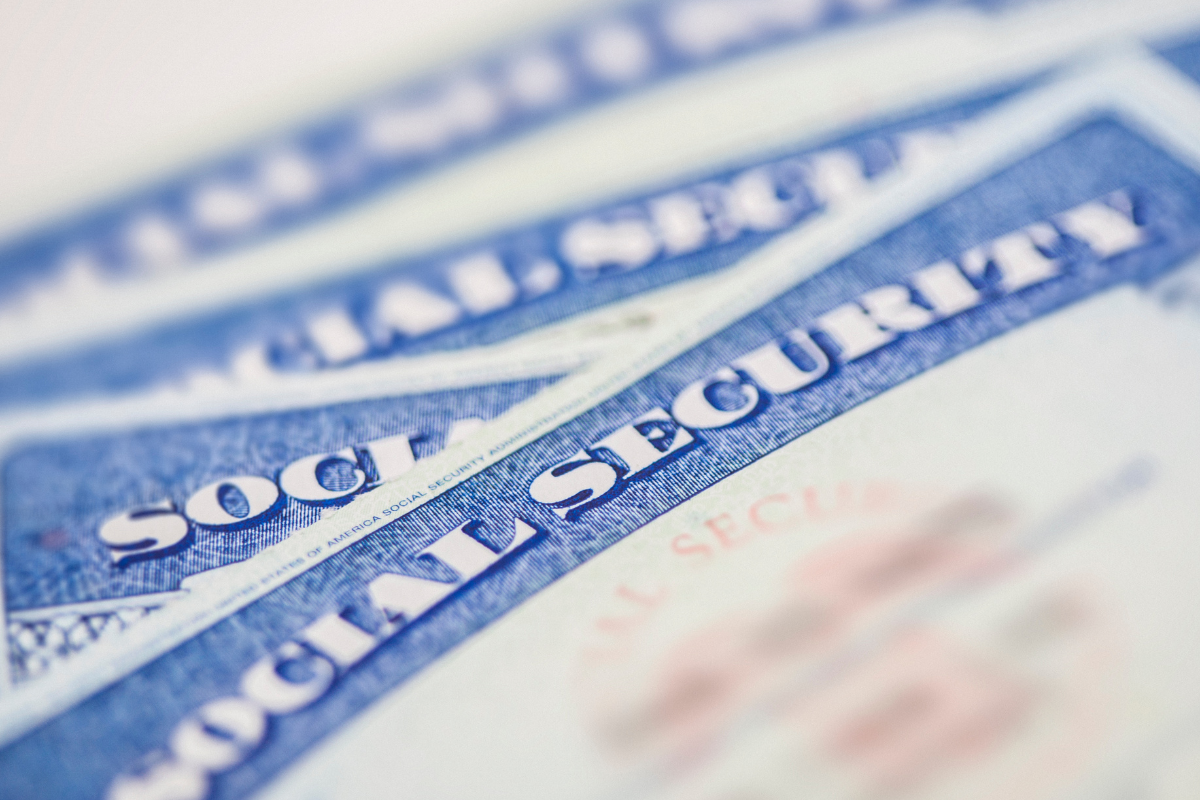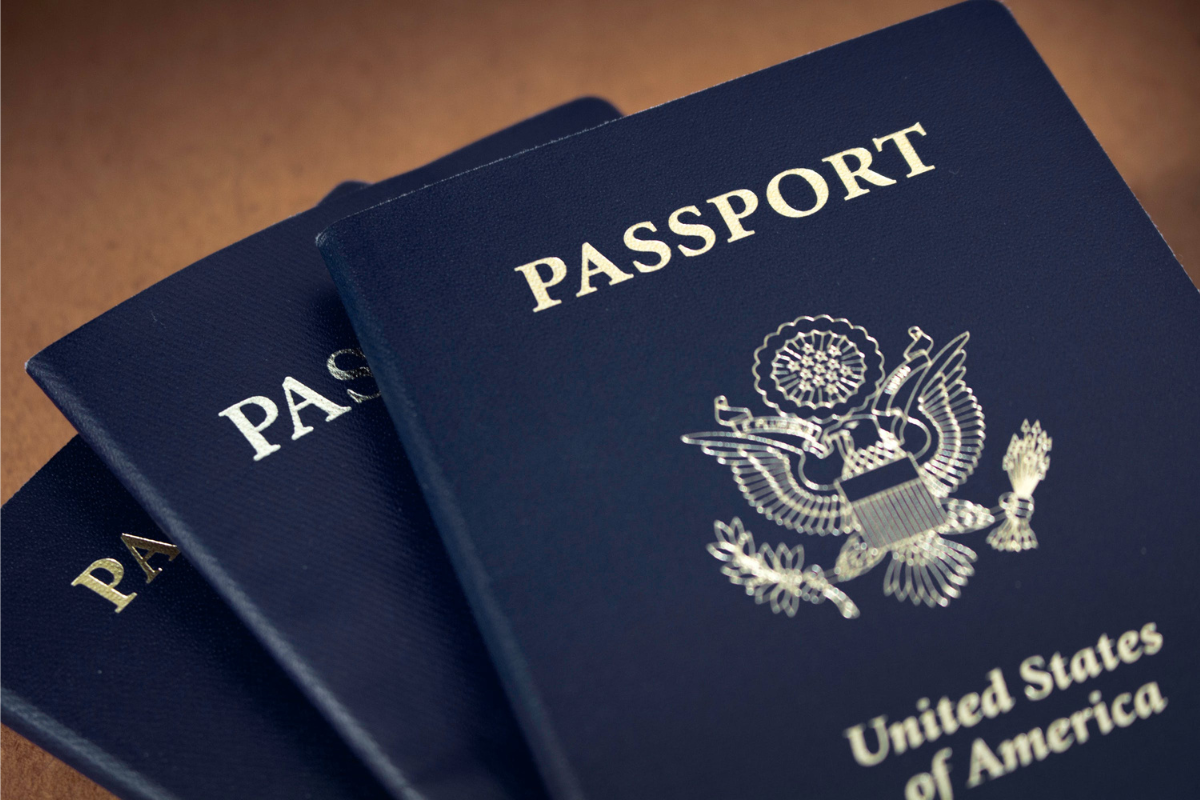Post Disclaimer: This blog reflects the author's personal experience with end-of-life matters and is provided in good faith for informational purposes only. While we aim to provide clear guidance on hard-to-find topics, this content is not legal advice and your use is at your own risk. Estate planning and end-of-life laws vary by location, so please consult your state's laws and seek guidance from a licensed attorney for your specific situation. We make no warranty about the accuracy or completeness of this information, which does not replace professional legal counsel. For more information, please see our full disclaimer.
Reporting a death to U.S. government agencies can feel overwhelming while grieving.
From Social Security and veteran benefits to passport cancellation, each agency requires specific documentation and timely notification.
This comprehensive guide simplifies these critical steps, helping families navigate federal requirements and reduce stress during difficult times.

Social Security Administration
Notifying the Social Security Administration (SSA) is essential when a loved one passes away.
This isn't just about updating their records; it’s also about unlocking critical benefits for surviving family members.
The SSA provides financial support through survivor benefits, which can help alleviate some financial pressure during an already challenging time.
Here's what you need to know about these benefits and how to apply.
Survivor Benefits
Survivor benefits aim to provide financial assistance to family members dependent on the deceased.
These include:
- Widow/Widower Benefits: The deceased's spouse may be eligible for monthly benefits if they are at least 60 (or 50 if disabled). If there are children under age 16 or disabled children being cared for, age requirements may not apply.
- Children’s Benefits: Minor and disabled adult children may qualify for monthly payments. This aid usually lasts until they turn 18 (or 19 if still in high school).
- Dependent Parents: If the deceased provided significant financial support to their parents, the parents might also qualify for survivor benefits.
The eligibility and amount received depend on the deceased’s earnings history and the family member’s relationship to them.
Visit the official SSA website, Social Security Survivor Benefits, for a comprehensive guide on eligibility and benefits.
Application Process
Applying for survivor benefits involves several key steps and documentation.
Although calling the SSA directly or visiting a local SSA office is common, the SSA's website also provides forms and other resources to guide you.
What You’ll Need:
- The death certificate of your loved one.
- Social Security numbers for both you and the deceased.
- Proof of relationship to the deceased, such as a marriage certificate or birth certificate.
- Dependent children’s Social Security numbers and birth certificates, if applicable.
- Your loved one’s most recent W-2 forms or tax return.
How to Apply:
- Call the SSA's toll-free number: You can dial 1-800-772-1213 (or 1-800-325-0778 for TTY) for assistance. An SSA representative will help you start the claims process.
- Visit a Local SSA Office: If you prefer in-person guidance, locate your nearest SSA field office.
- Complete an Application Form: Either online or via paper. Forms like SSA-10 or SSA-24 are commonly required, depending on the benefits being claimed.
It’s important to file your application as quickly as possible, as benefits are not retroactive beyond six months in most cases.
For more details about the process, check out the SSA Application for Widow’s Benefits.

Internal Revenue Service (IRS)
The passing of a loved one may bring emotional grief, but practical responsibilities also follow.
Among them is addressing tax-related matters with the Internal Revenue Service (IRS).
From filing final tax returns to understanding survivor tax implications, these steps must be handled promptly to prevent financial and legal complications.
Filing Final Tax Returns
Filing the final tax return for a deceased person is the responsibility of their personal representative.
This could be their surviving spouse, executor, or another legally appointed individual.
The final return covers the income earned from January 1 through the date of death in that tax year.
Here’s what to know:
- Personal representatives must use IRS Form 1040 for individual income tax filings.
- If a refund is due, completing Form 1310, Statement of Person Claiming Refund Due a Deceased Taxpayer, is often required.
- All income sources, including retirement accounts or investments, must be reported accurately.
For more details about the process, visit File the Final Income Tax Returns of a Deceased Person for step-by-step guidance.
Tax Implications for Survivors
The death of a family member can reshape the tax obligations of surviving spouses or dependents.
Understanding these changes can help avoid surprises during tax season.
Some key points include:
- Surviving Spouse Considerations: If you’re a surviving spouse, you may file a joint return in the year of your spouse’s death. This typically results in a more favorable tax rate compared to filing individually.
- Inheritance Taxes: Federal estates above a specific threshold may be subject to estate taxes. On the state level, inheritance taxes may apply depending on your residence.
- Handling Retirement Accounts: Inherited IRAs or 401(k) plans may have Required Minimum Distributions (RMDs). These often add taxable income for the survivor.
For more information on survivor tax implications, check out the IRS guide on dealing with deceased taxpayer obligations at How to File a Final Tax Return for Someone Who Has Passed Away.
Staying organized and seeking advice from financial professionals when needed can make managing these responsibilities less overwhelming while ensuring compliance with IRS rules.

State Department for U.S. Passport
When a loved one passes away, their passport becomes invalid, and the proper steps must be taken to cancel it.
You might wonder why this is necessary — simply put, canceling the passport reduces the risk of identity theft and ensures that the passport can’t be misused.
Here’s how you can handle this task effectively.
Canceling a Passport: Steps to Follow
Canceling a deceased's passport is a relatively straightforward process.
Follow these steps to complete it efficiently:
- Locate the Passport: Start by retrieving the deceased's passport. If you don’t know its location, check personal belongings such as drawers, safes, or filing cabinets.
- Prepare the Required Documentation:
- You’ll need a certified copy of the death certificate to prove the individual’s passing.
- Have a short note stating the reason for the passport's cancellation.
- Send to the State Department: You can find detailed mailing instructions on USA.gov, including the exact address and office to which these items must be sent.
- Mail both the passport and death certificate to the U.S. State Department.
- Clearly write "Cancelation of Passport Due to Death" on the envelope to avoid any delays.
- Optional Request: If you'd like the canceled passport returned to you as a keepsake, mention this in your note. The State Department may accommodate under certain conditions.
- Secure Delivery: Always use a trackable mailing service to ensure the documents reach safely.
The U.S. Embassy and its consulates also provide assistance for deaths occurring abroad.
The consular officer may cancel the deceased's passport as part of the process. Read more about managing this abroad through the U.S. Embassy guide.
Taking time to properly cancel the passport is not just a bureaucratic necessity; it’s also a thoughtful action to prevent further complications.
While these measures seem small in the grander scheme of grief, they bring much-needed closure and security.

Veterans Administration for Veteran Benefits
When a veteran passes away, their family may qualify for various benefits administered through the Veterans Administration (VA).
These benefits aim to support families with financial, emotional, and practical assistance during a difficult time.
Understanding the steps involved and knowing where to start can make the process less overwhelming.
Eligibility for Benefits
Families of deceased veterans may be entitled to a range of benefits depending on their relationship to the veteran and the veteran's service history.
Here are common options:
- Dependency and Indemnity Compensation (DIC):
This is a tax-free monetary benefit provided to eligible survivors, including spouses, children, and parents of veterans who died from service-related injuries or diseases. Eligibility often depends on factors such as the veteran's active-duty status and the cause of death. To learn more, visit About VA DIC.
- Survivors Pension:
Surviving spouses and unmarried dependent children of wartime veterans may qualify for this benefit if they meet certain income thresholds. It provides monthly payments to help with living expenses. You can read more about the criteria at Survivors Pension | Veterans Affairs.
- Education and Training Assistance:
Surviving children or spouses may gain access to education funding through programs like the Survivors' and Dependents' Educational Assistance (DEA). This can cover tuition or job training expenses, ensuring stability for the family.
- Burial and Memorial Benefits:
Families may also qualify for help with burial costs, grave markers, and memorial services. Visit the VA Death Benefits Guide for detailed options.
Claiming Benefits
Applying for VA benefits can be a complex process, but with preparation and persistence, families can navigate it successfully.
Here's how to proceed:
- Gather Essential Documents:
- Death Certificate: A certified copy is required to confirm the passing of the veteran.
- Proof of Military Service: The veteran's DD214 form (or equivalent) is necessary to validate their service history.
- Marriage or Birth Certificates: These confirm the relationship of the surviving family members to the veteran.
- Submit the Proper Form(s):
Most benefit applications require VA Form 21P-534EZ (Application for DIC, Death Pension, and/or Accrued Benefits). This form acts as the catch-all starting point for claiming many types of family benefits. Download this form and learn more at VA's Survivor Benefits Kit.
- Contact Your Local VA Office:
The VA works through regional offices to process claims locally. Visit or call the nearest office to ensure you understand any additional state-specific benefits or requirements.
- Leverage Advocacy Groups:
Organizations like the Disabled American Veterans (DAV) connect surviving family members with help navigating VA claims. They can guide you for free and ensure you aren’t missing out on any vital benefits.
While claiming these benefits might feel bureaucratic, it’s worth persisting to ensure your family receives what you're entitled to.
Every resource accessed can provide crucial support during this time of need.
Also, check out my post on reporting a military retiree's death to DFAS (Defense Finance and Accounting Service, another critical step in the notification process.

Federal Employee Benefits
When a federal employee passes away, survivors may be eligible for a wide range of benefits.
These can include financial support, health coverage, and even options for ongoing education or retirement security.
Knowing what benefits are available and how to claim them can provide crucial relief during a challenging time.
Survivor Annuity Benefits
Survivor annuity benefits offer financial security to the family members of deceased federal employees.
These are meant to replace a portion of the employee’s salary and ensure ongoing financial stability.
Most survivors eligible for these benefits are spouses, children, or dependent family members.
How This Works:
When a federal employee passes, their eligible survivors may receive annuity payments.
The exact amount depends on the employee’s service length and specific federal retirement plan.
Spouses usually are the primary beneficiaries, while dependent children or other designated family members may also qualify for partial benefits.
Applying for Survivor Annuity Benefits:
Filing for these benefits requires precision and preparation.
Here are the steps:
- Obtain Required Documents:
- Certified death certificate.
- A copy of the employee’s federal benefit statement.
- Proof of the applicant’s relationship, such as a marriage license or dependent birth certificate.
- Contact the Federal Agency: Survivors need to get in touch with the Office of Personnel Management (OPM), which oversees federal benefit claims. You can start the process via their official website.
- Submit Appropriate Claims Form: Use the Application for Death Benefits form (SF 3104) or other relevant forms depending on the employee’s benefit status. You’ll find detailed instructions for completing this form on platforms like Help for Federal Employee Benefits.
- Follow Guidance for Accurate Filing: Incorrect or incomplete submissions can delay processing. Double-check all entries and consider speaking with an OPM representative for advice.
Having a clear plan during such challenging times makes navigating bureaucracy smoother and quicker, enabling you to focus on what truly matters.

Death of a U.S. Citizen Abroad
The process of handling the death of a U.S. citizen abroad can feel deeply overwhelming.
Apart from navigating grief, you’ll need to address both local and U.S. administrative procedures.
Taking decisive steps quickly can help minimize delays and ensure everything is handled according to your loved one’s wishes.
Involving Local Authorities
When a U.S. citizen passes away abroad, connecting with local authorities and the U.S. embassy or consulate is critical.
Start by notifying the local police or hospital in the country of death.
They will often initiate a formal investigation or issue an official death certificate.
You’ll receive guidance tailored to the specific laws of that country.
Keep in mind, procedures and requirements may vary.
Next, contact the nearest U.S. embassy or consulate. U.S. consular officers play an important role in providing assistance during such challenging times.
Their job typically includes:
- Releasing a “Consular Report of Death Abroad” (CRDA), which is an official document that simplifies legal and administrative tasks back in the U.S.
- Offering advice on handling remains, whether repatriating them or opting for local burial.
You can find a thorough guide on what to expect when reporting the death of a U.S. citizen abroad at Travel.gov’s Death Abroad page.
Remember, the assistance provided by local consulates goes beyond documentation.
They can suggest translation services or attorneys familiar with local laws, reducing some of the stress you may face.
Repatriation of Remains
If you plan to bring your loved one’s remains back to the U.S., you’ll need to follow specific repatriation procedures.
Start by working with the U.S. embassy or consulate.
They can provide valuable insights into local regulations and connect you with English-speaking funeral homes that handle international transfers.
The consulate might also facilitate required documentation, including permits for transporting remains.
The process often involves:
- Obtaining Required Permits:
- Local death certificate and its certified translation.
- Passport and identification documents of the deceased.
- A Consular Report of Death Abroad.
- Coordinating with Funeral Services: Funeral homes in the U.S. and the foreign country must work together to ensure proper handling of the remains. Services may include embalming (if required for transport), shipment coordination, and necessary customs clearances.
- Engaging an International Shipping Company: These companies specialize in transporting human remains or ashes. They will guide you in gathering paperwork while ensuring compliance with aviation laws.
The expenses for repatriation can be significant.
Keep in mind that some life insurance policies may cover these costs.
For additional details, visit Travel.State.Gov's Consular Report of Death Abroad Guide.
Understanding these steps ahead of time can help streamline a process that otherwise feels daunting.
With proper guidance and coordination, you’ll be able to manage this step with dignity and care.

Wrap-up: Reporting a Death to U.S. Govt. Agencies
Reaching out to the necessary U.S. government agencies after losing a loved one ensures legal and financial matters are addressed.
Communicating with the Social Security Administration, IRS, VA, and other relevant departments safeguards benefits and prevents complications.
Being organized during this process helps reduce additional stress.
Use official resources to understand steps, gather essential documents, and meet deadlines.
Taking these actions provides clarity and stability amidst the grieving period.
Check out the Up & Doing glossary page for an alphabetical listing of key terms related to estate administration, funeral planning, and other end-of-life topics.




